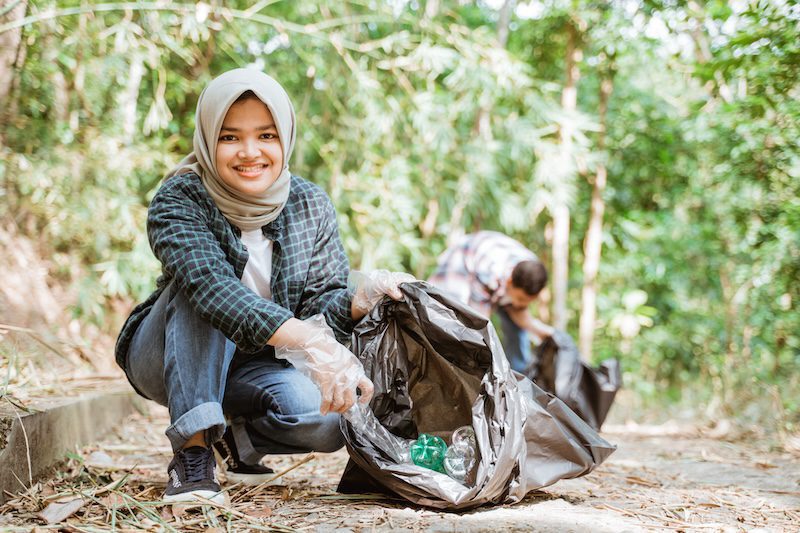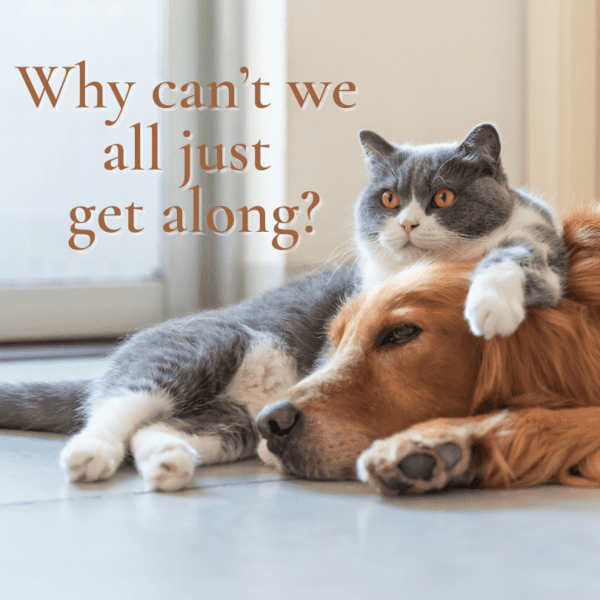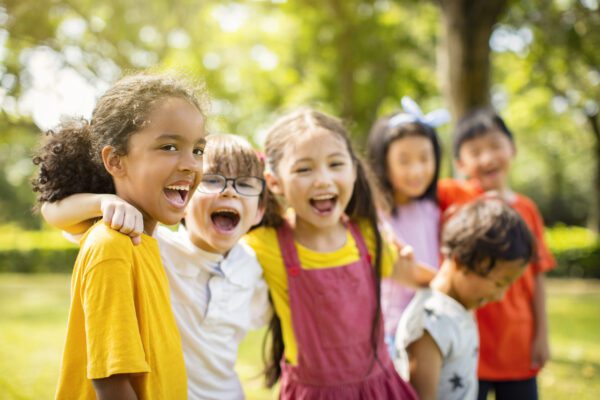Building Family Relationships, Building Resilience, Newsletter Articles, Play & Nature Play, Posts for Parents, Screen time
Raising caring humans in an uncaring world

In short …
- Our modern Western society has become very individualistic and this is impacting our kids and teens by making them more isolated. The influence of consumerism – particularly big tech – feeds this.
- We are increasingly becoming more of a ‘me’ society than a ‘we’ society and as a result our kids (especially our teens) are struggling with more negativity, cyberbullying, anxiety, depression, body image issues, developmental challenges and more.
- In this blog, Maggie offers 5 ideas for parents and carers to help reclaim ‘we’ thinking, and to raise our kids to be kind, empathetic, compassionate, resilient and respectful.
Our world seems to be in quite a lot of turmoil at the moment. No matter where you look, globally, nationally, locally and within our communities, there seems to be unresolved conflict.
I regularly take long walks to soothe my troubled mind and on a recent wander, I remembered something quite out of the blue. In 2006, I visited the Oklahoma bombsite memorial, created in memory of the 168 lives lost during a 1995 terrorist attack on the city’s Federal Building. Two things struck me deeply. The first was an incredible, deeply scarred old tree that had survived the bombing and, in doing so, had become a symbol of strength and hope. The second was a wall of ceramic tiles that had been created by children to honour the 19 children who were tragically killed when the building’s childcare centre was destroyed.
The words on the tiles, written by a seven-year-old boy, were :
Why can’t we all just get along?
Talk about an out-of-mouths-of-babes moment – how incredibly true. One of the main focuses of living in the Western world over time has been the emphasis on individual success. It’s this notion of ‘me’ versus ‘we’.
I’ve written previously about the work in this area by social work scholar and world-renowned resilience researcher Dr Michael Unger, who wrote a wonderful book that explored this in 2009, and I fear things have not improved much since then. Sadly, the digital world has contributed to this sense of individualism, and it has also created a sense of social dislocation. We may feel more connected while we watch what other people are doing, saying and sharing but are we?

For many communities, digital connection is profoundly important and a wonderful thing. However, the drive to make enormous profits has created a disturbing tendency for big tech to manipulate our experiences online to ensure we see more advertisements and provide more data so that tech companies make more money.
I find it incredibly disturbing to know that a conversation I have with my good bloke will suddenly spark content on my social feeds about something we have mentioned! We know that the algorithms have been designed to manipulate what we see and it has been clearly shown that the more negative content we see the longer we stay engaged. This means more profits. This focus on the negatives can desensitise every one of us, especially our kids and teens. It can make us care more about ourselves and less about others. It can also cause people to behave in hostile ways in online spaces, in ways they may not behave if they were face to face.
We can forget we are a social species and function best when we work together for the greater good of all.
Even though we know this happens, and as mature adults we have the capacity to make good decisions in terms of our actions and how we spend our money, it can still mess with our heads. On a recent podcast, I heard Esther Perel, a very wise psychologist and relationship expert, explaining that we may feel more connected in our digital worlds, however, we are actually more disconnected in real time. She mentioned that she has thousands of followers online, and no one to feed her cat.
For our children who are navigating this journey, it is shaping their experience of relationships, especially in the shaping of their own sense of self. We know there’s been a massive increase in teenage anxiety disorders, depression, challenges with body image, bullying, trolling and sextortion.
Adolescence is already a time of massive transformation that can be incredibly stressful day by day. Having a smart phone meets all of our teens’ psychological needs – connection, competence and control. Yes, there is some wonderful content online that can help with education and creating a sense of connection and fun, and there is the capacity to follow really helpful humans.
But the digital world is wired against them. It is wired to have them see harmful content to ensure they stay engaged.
The fact that there are specific algorithms for teenage boys to ensure they are immersed in misogynistic, disturbing violent content, especially degrading pornography, is not only abhorrent, it is outrageously unethical. Our girls are marinated in content about the need to be thin and beautiful in a prescribed way. There is no question it is impacting not only their relationship with themselves, but also with others.
There is a poignant and beautiful story in Jonathan Haidt’s latest book The Anxious Generation that captures what happens for girls. A 14-year-old was finally allowed to have a phone and access to Snapchat. For the first two weeks she couldn’t believe how fantastic it was to be so connected to her friends and the things she loved. After those two weeks the content that she was exposed to changed and she was immersed in content that included self-harm, starvation techniques and ways to change how she looked. Just a few months after she had access to Snapchat, she called it a trap.
Tech companies could change the algorithms tomorrow to prevent our children and teens seeing harmful content. But they don’t seem to be offering to do that.

So what can parents and other community members do?
-
Get loud about protecting our kids from harm
Our job as parents and guardians of our children is to step up and do all we can to protect them from the harm of the digital world. I am a part of the 36 Months campaign seeking to change legislation to lift the age at which people can sign up to social media accounts from age 13 to 16. I am fully aware of the difficulties of enforcing such a change, especially around identity verification. Also whenever you ‘ban’ things, especially for teenagers, they find ways around it. It is not a complete solution however it sends a really strong message to parents, educators, government and tech companies that we all need to be far more proactive in protecting our kids. We need to speak up. Please join us in signing the petition.
-
Educate yourself & your kids about online safety
Secondly, we need to be able to educate ourselves and our kids around how to keep themselves safe online – and how to be good people when interacting in digital spaces. There are some excellent programs in our schools, however they often only come for one day a year and apps have a tendency to change settings, which can make the previous advice irrelevant.
Parents sometimes tell me they feel completely overwhelmed by all this and it can feel easy to just keep a loose eye on things and hope for the best. Honestly, though, this is really becoming almost as important as your child’s physical safety. The consequences of them being bullied, groomed or the victim of sextortion – or of being a perpetrator – can scar them for many years to come.
Following some of the leading tech educators online is really helpful because they have their finger on the pulse all the time warning of potential harm, and educating kids on how to navigate this crazy world.
I keep my eye on the newsletters and social media feeds of folks like the eSafety Commissioner, Safe On Social, Yas London , SOS Surf on Line Safe, The Australian Federal Police’s Think U Know resources, Dr Kristy Goodwin, The Unplugged Psychologist. and DiGii Social. There is support out there.
-
Work on respectful, compassionate communication
There is nothing more important about learning how to become a capable, respectful, resilient person than learning how to be an effective communicator.
Communication is about more than speaking and listening – much of it is non-verbal and yet it is still communication. It can be very difficult to navigate conflict with other humans without the ability to communicate. One key to this is to spend as much time in the real world as possible, especially as children. We know that our five-year-olds are turning up to school with less oral vocabulary than previous generations which is a clear sign that they are not being exposed to the same level of human communication as previous generations.
It’s not just conversation – it’s being read to, it is being sung to, and it’s being listened to. Sadly, in our busy world and with smart phones, this has become harder for all of us.
Without words or other signs/gestures, we are unable to express our own needs and that puts us at more risk of struggling with conflict with others, regardless of age. To resolve conflict, we need to be able to listen, respond and possibly negotiate a way forward. The conflict around the world seems to be based on the philosophy ‘my way or the highway!’
As parents you can work against this in small ways – even just sitting down to dinner together as a family and having a conversation, or having a family meeting to make sure everyone’s perspective is heard.
-
Model empathy and good digital citizenship
It’s not just global conflict, we are seeing much more hostility play out in our communities and online spaces. A part of the problem is there has been a decline in empathy, which broadly is the capacity to appreciate another person’s view of the world and concerns. If a child has not been marinated in an environment with emotionally mature, caring adults then they can really struggle with this. Even if they have grown up around respectful adults, being exposed to other influences in their formative tweens and teens can see a big shift – especially in their digital interactions.
It’s important for we adults to model empathy and generosity and effective, respectful communication in order for children to learn how to do it.
Sadly, they see badly behaved grown-ups everywhere, from our parliaments, to our media outlets, in our shopping centre carparks, and definitely online. As well as modelling, it can help to point it out when you see this behaviour and have conversations with your kids about it.

-
Prioritise play in childhood.
Another enormous part of developing a capacity to get along with other humans is that in childhood play needs to be prioritised. I have been writing about this for over 30 years and it has never felt more urgent to ensure play is returned to its rightful place if we are to raise more caring, competent humans who have no need to hurt others verbally or physically to get their own way.
Dr Peter Gray has been writing extensively about the importance of play for many years and sadly the digital devices keep on stealing the opportunity and the time for our children to do what they are biologically wired to do, play with other children. (I created an audio called I Am a Good Friend which may help improve social skills for kids who are finding it hard).
Our world seems to be more focused on our children’s grades, rather than nurturing their ability to connect, communicate and interact with other humans. Social anxiety increased significantly over the last five years that was partly due to the impact of the global pandemic. However, we do have a responsibility to ensure our children are existing in the real world not just the virtual world as they progress through their childhood into adolescence.
Thank you to all the schools that have been shifting their focus to the well-being of their students especially through play and through the arts.
Human connectedness is the absolute best protective factor for wellbeing for everyone.
There is a current concern about the epidemic of loneliness in older generations and to avoid that we need to ensure more connectedness from childhood through to adulthood. The ABC created two documentary series about connection across the generations. Old People’s Home for 4 Year Olds paired elder citizens and young children, while Old People’s Home for Teenagers matched seniors and teens. Both showed heartwarming connectedness that was enjoyed by all, and the academic experts involved with the shows believed they provided good evidence that this intergenerational care really had the power to change wellbeing outcomes for both generations. The decline in the sense of raising children in a ‘village’ has also contributed to a decline in human connectedness and thus empathy and consideration.
I have been recommending for a long time that the best way to raise happy, healthy, resilient children is prioritise as much time for playing in the outside world with potential risk, with children of different ages, all genders and within a bloodcurdling scream’s distance of one safe adult.
This is how Mother Nature intended children to grow, to be able to become caring and responsible for others.
-
Be kind and generous, and expect it of your kids
Other than prioritising play and building intergenerational connection, modelling care and consideration for others in homes and schools needs to be a priority.
Kindness matters and so does being generous – which can be difficult in a ‘me’ focused generation. It can be as simple as being a good neighbour, or volunteering in some way or donating food or items to charities. I love watching the stories around Telethon in Western Australia as kids everywhere jump on board raising money for sick kids. Many schools have programs where students can become environmental warriors, or have opportunities to be of service. If we keep in mind – we cannot be what we have not seen – we can help create ways of nurturing good character. I shared some other ideas around this in another blog about raising ‘we’ kids.
The best way we can change our world to be more caring, is to start with ourselves. How can I be a better human? Trust me, a child will notice.
Then I think we could find some solutions to what that young child asked all those years ago: “Why can’t we all just get along?”.
Image credits:
Meme images: Cat/Dog image © chendongshan /depositphotos.com. THINK image: canva template
Main image: © odua / depositphotos.com
Kids image: © tomwang / depositphotos.com



